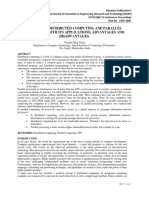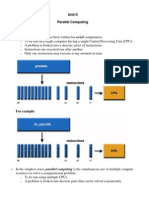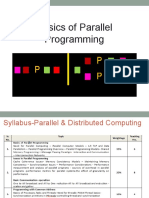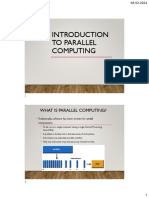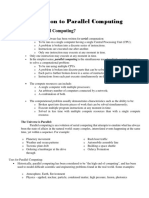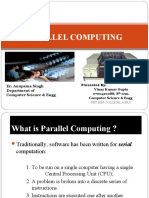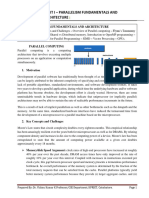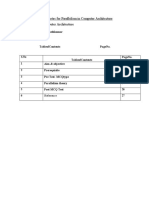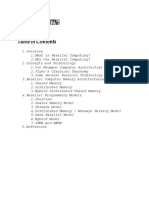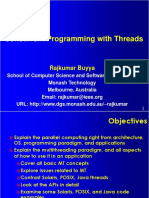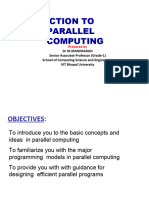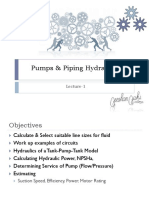0% found this document useful (0 votes)
113 views39 pages01 Whyparallelism
The document discusses the history of parallel computing and how performance improvements in single processors reached a limit, leading to the need for parallel programming. It describes the course content which will cover different models of parallel programming including shared memory, GPUs, and message passing. Students will complete assignments, exercises, and a final project involving parallel programming.
Uploaded by
zfzmkaCopyright
© © All Rights Reserved
We take content rights seriously. If you suspect this is your content, claim it here.
Available Formats
Download as PDF, TXT or read online on Scribd
0% found this document useful (0 votes)
113 views39 pages01 Whyparallelism
The document discusses the history of parallel computing and how performance improvements in single processors reached a limit, leading to the need for parallel programming. It describes the course content which will cover different models of parallel programming including shared memory, GPUs, and message passing. Students will complete assignments, exercises, and a final project involving parallel programming.
Uploaded by
zfzmkaCopyright
© © All Rights Reserved
We take content rights seriously. If you suspect this is your content, claim it here.
Available Formats
Download as PDF, TXT or read online on Scribd
/ 39


